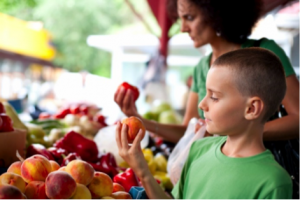 When most people think of food poisoning they picture spoiled meat. And that’s not surprising considering campylobacter jejuni – one of the world’s most common bacteria – is carried by chickens and spread by handlers with limited food safety training. There are numerous cases of C. jejuni poisoning each year in Canada, mostly caused by exposure to undercooked poultry, raw milk, untreated water – and even raw vegetables.
When most people think of food poisoning they picture spoiled meat. And that’s not surprising considering campylobacter jejuni – one of the world’s most common bacteria – is carried by chickens and spread by handlers with limited food safety training. There are numerous cases of C. jejuni poisoning each year in Canada, mostly caused by exposure to undercooked poultry, raw milk, untreated water – and even raw vegetables.
Many people don’t realize that through cross-contamination, even vegetarians can contract food poisoning from animal-carried pathogens. And that’s precisely what happened to a batch of fruit produced by the California-owned Sweet 2 Eat brand. It was infected with Listeria – a bacterium normally associated with meat and animal products.
Here’s what you need to know about the recent fruit recall:
Which Fruits To Avoid
According to the Canadian Food Inspection Agency, we need to watch out for Sweet 2 Eat whole peaches, plums, nectarines and pluots (a plum/apricot hybrid). Because the brand is packaged by the Wawona Packing Company of California, we may also find the recalled fruits in containers bearing their name – or the label, “Harvest Sweet.” Individual fruits bear the Sweet 2 Eat sticker, but there are 45 varieties of packing for bulk quantities. Visit the CFIA website for a complete list. If you bought recalled fruit, either take it back to the store or throw it away.
What Is Listeria?
Listeria monocytogenes is a disease-causing bacterium that is resistant to both hot and cold temperatures. It’s found in soil, water, and the intestines of some animals. Animals carrying the pathogen show no symptoms, so it can be silently transferred to foods such as unpasteurized dairy products, raw vegetables and raw meats. Early symptoms of infection present themselves much like the flu and include nausea, muscle aches, diarrhea and a high fever. Despite food safety certification measures, hardy listeria can infiltrate and survive in factory settings for several years.
How Did Listeria Get On My Fruit?
Well, the question is really, how did listeria get into your fruit. Once it has infected surrounding water and soil, listeria can actually seep through the porous outer layer of many fruits. And any graduate of a food safety course knows, bacteria can also be transferred through careless handling – in the case of fruit, this could mean slicing open a peach without first washing it, thereby transferring bacteria from the outside to the inside along the blade of a knife.
Who Is Most At Risk?
Well, food poisoning is serious business for the healthiest human, but when it comes to Listeriosis, vulnerable populations are particularly at risk – pregnant women, newborns and people with weakened immune systems. In 2008, a listeria outbreak linked with contaminated Maple Leaf products from a Toronto factory killed 22 people. It’s worth taking notice of this recall, and double checking the label on your favourite summer fruits.
Have you ever had a case of food poisoning from fruits or veggies?



